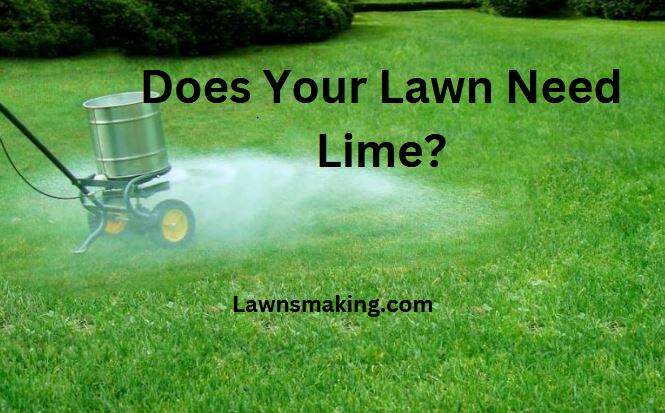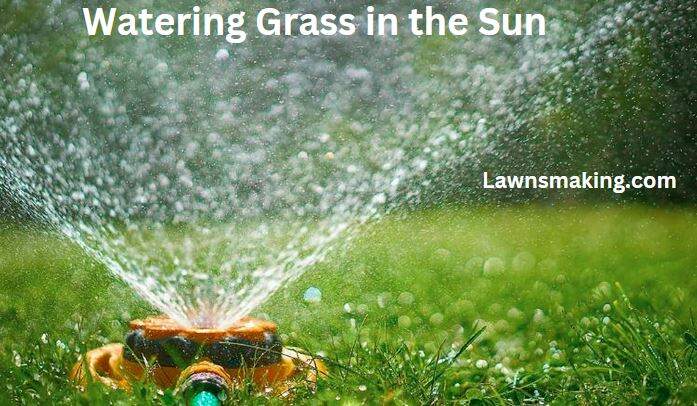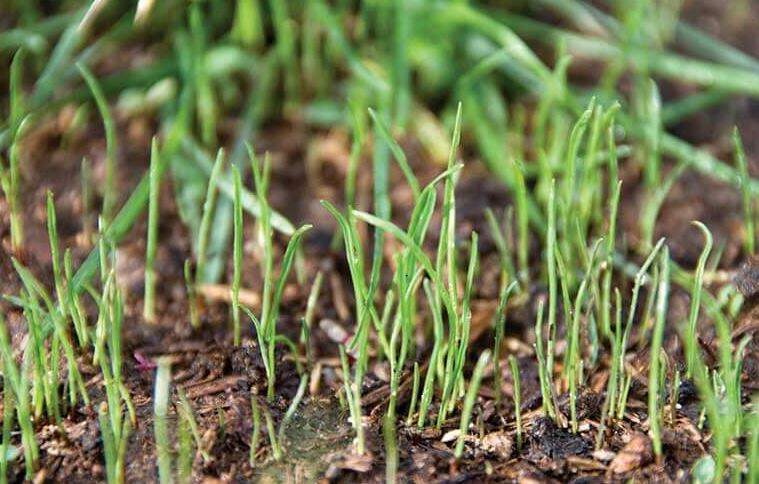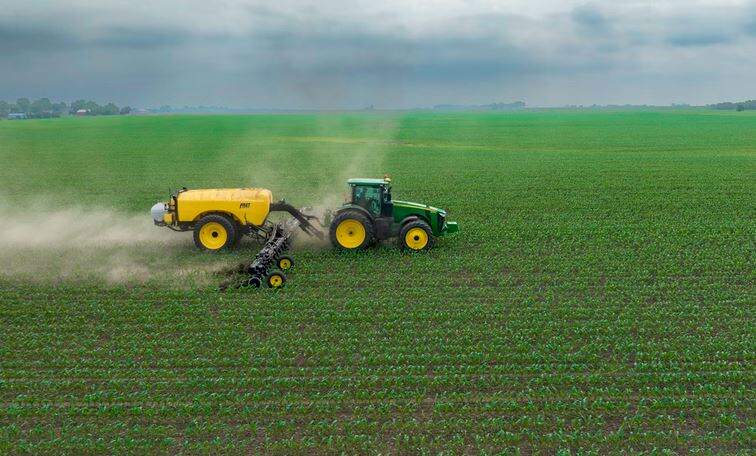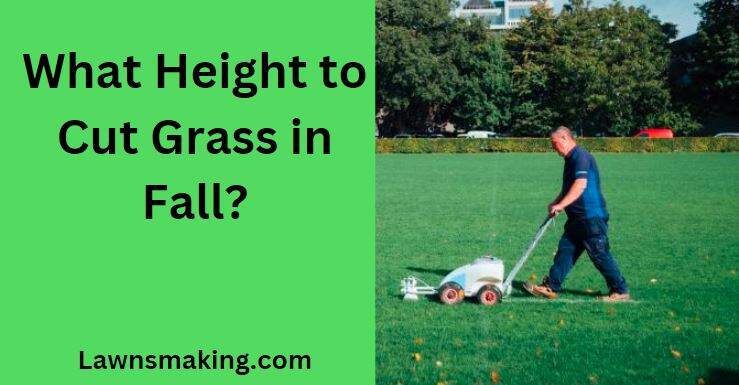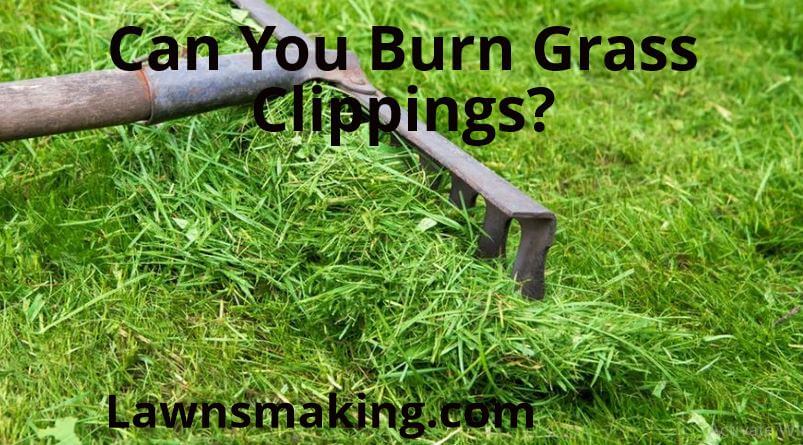
Many people resort to burning as a quick solution when faced with a pile of grass clippings. However, this seemingly convenient solution may have hidden consequences that could harm the environment and your garden. As a result, this begs the question, “Can you burn grass clippings?”
Although you can burn grass clippings, the practice isn’t recommended. Not only can it release harmful pollutants into the air, but it may also violate local regulations. Instead, consider mulching or composting your grass clippings – these eco-friendly methods reduce waste and nourish your lawn.
Join me if you’re seeking clarity on whether burning grass clippings aligns with your lawn care goals. Here, you will understand the basics of grass clippings and the pros and cons of burning clippings. I will also answer the question, “Can you burn grass clippings?” and share eco-friendly and sustainable ways to manage your yard waste.
Can You Burn Grass Clippings? The Background
Grass clippings are the tiny pieces of grass that remain in your yard after mowing. They consist of both small plant debris and grass blades.
Grass clippings are sometimes captured in your mower’s grass catcher as you mow the lawn.
A point worth noting is that grass clippings are short based on the one-third mowing rule. It’s not recommended to mow your lawn more than one-third of the grass height in one mowing session. This will stress the grass.
What Is the Significance of Grass Clippings in Lawn Care?
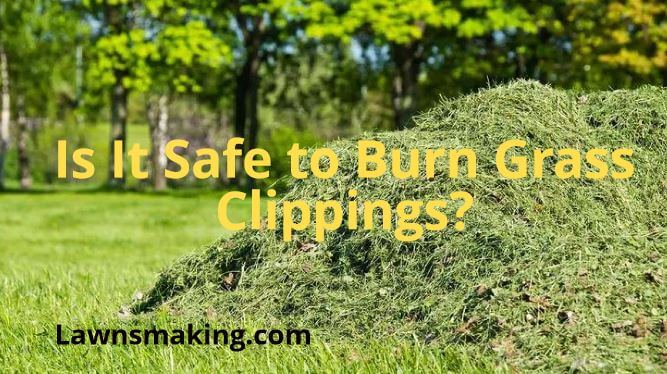
Grass clippings, often overlooked, are a valuable lawn resource with vital nutrients like nitrogen, which benefits a lawn’s health.
It will help to leave these clippings on your freshly mowed lawn since they act like a natural fertilizer, giving your grass a healthy boost and improving the soil beneath.
But here’s the trick: innovative mowing practices. Avoid cutting more than one-third of the grass’s height in one go. This way, the grass clippings break down naturally, returning essential nutrients to the soil.
The result? A healthier, greener lawn that looks fantastic.
What Is the Environmental Impact of Burning Grass Clippings?
Burning grass clippings releases harmful pollutants like volatile organic compounds (VOCs), carbon dioxide, and particulate matter into the atmosphere, contributing to air degradation.
According to Climate.gov, the second-largest source of volatile organic compound (VOC) pollutants is biomass burning, which includes grass burning.
Poor air quality, in turn, can result in health issues for humans and harm the environment.
Additionally, burning grass clippings disrupts the natural nutrient cycle, potentially reducing plant health and imbalanced soil. Instead of returning valuable nutrients to the ground, burning them removes them from your lawn.
Therefore, despite seeming like a convenient means of disposing of yard waste, burning grass clippings has significant environmental consequences.
Legal and Safety Considerations When Burning Grass Clippings
It will be best to explore the legality of burning grass clippings before reaching for the match stick.
Similarly, getting acquainted with safety considerations before burning yard waste can help you mitigate unwanted risks.
Is It Legal to Burn Grass Clippings?
The legality of burning grass clippings depends on your local regulations. Many areas have strict rules against open burning due to safety and environmental concerns.
Before opting to burn grass clippings, please get acquainted with local laws and regulations. Violating these rules may result in hefty fines or other legal consequences.
Some regions allow the burning of grass clippings. Nevertheless, you may encounter restrictions on how and when you can burn. These regions may also require you to have permits or adhere to acceptable burning times.
Remember, it is your responsibility as a homeowner to know and comply with local regulations to avoid legal issues and ensure responsible lawn care.
Use these tables to guide you on the best time to burn clippings if you reside in areas where open burning is legal.
Table 1: Moisture Levels and Burning Grass Clippings.
| Moisture Level | Moisture Description | Burning Grass Clippings |
| Very Dry (Below 10% / 20%) | Grass clippings are very dry with low moisture content. | More favorable for burning if the grass clippings are dry. |
| Dry (10% – 20% / 20% – 40%) | Grass clippings are dry with moderate moisture content. | Can be suitable for burning but ensure proper dryness. |
| Moist (20% – 40% / 40% – 70%) | Grass clippings have moderate moisture content. | Consider moisture levels when deciding on burning. |
| Wet (Above 40% / Above 70%) | Grass clippings are wet with high moisture content. | Burning is less advisable due to difficulty in ignition. |
Table 2: Temperature and Burning Grass Clippings
| Temperature Range | Burning Grass Clippings |
| Below Optimal (Below 50°F / Below 10°C) | Burning may be less frequent as grass growth is slower. |
| Optimal (50°F – 80°F / 10°C – 27°C) | Ideal conditions for burning grass clippings, if chosen. |
| Above Optimal (Above 80°F / Above 27°C) | Burning can be less advisable due to increased fire risk. |
Safety Precautions When Burning Grass Clippings
Safety should be at the top of your priorities when considering burning grass clippings. Fires can quickly get out of control, posing risks to nearby property, the environment, and human safety.
Follow these precautions to ensure a safe burning process:
- Choose a secure location: Select a well-ventilated, open area away from flammable materials, structures, and trees.
- Keep water and fire extinguishers at hand: Have a water hose or fire extinguisher nearby to tame flames that may spread.
- Follow local regulations: Adhere to local laws and regulations regarding permits, safety measures, and burning times.
- Use appropriate equipment: Ensure you have the right tools for the job—a metal burn barrel or designated fire pit.
- Stay attentive: Never leave burning grass clippings unattended. Monitor the fire until it’s completely extinguished.
Pros and Cons of Burning Grass Clippings

Exploring the benefits and drawbacks of burning grass clipping will help you make informed decisions on managing yard waste.
What Are the Benefits of Burning Grass Clippings?
Burning grass clippings can be an efficient disposal method and may aid in eliminating potential pathogens present in the clippings.
Here are other benefits of burning clippings:
- Quick disposal: Burning gives you a fast method for disposing of grass clippings, reducing lawn clutter, and enhancing yard aesthetics.
- Weed control: Burning grass clippings helps control weeds by eliminating weed seeds, thus preventing their spread.
What Are the Drawbacks of Burning Grass Clippings?
Burning grass clippings contributes to greenhouse gas emissions, releasing carbon dioxide. It also depletes organic matter, as clippings contain valuable organic material.
Here are additional drawbacks of burning clippings:
- Safety concerns: Fire hazards and safety risks arise when burning grass clippings.
- Nutrient depletion: Burning removes valuable nutrients from the lawn, reducing plant health and imbalanced soils.
- Environmental impact: Harmful pollutants and carbon dioxide are released into the air during burning, contributing to air degradation and the pollution of local ecosystems.
Sustainable Alternatives to Burning Grass Clippings
There are responsible and environmentally friendly alternatives to burning grass clippings. It will be best to consider these methods since they do not pose severe risks to the ecosystem.
Alternative disposal methods for grass clippings include:
- Mulching: Invest in a mulching mower that cuts grass clippings into fine pieces, allowing them to decompose quickly and enhance the soil’s nutrient content.
- Leaving clippings on the lawn: Letting grass clippings decompose naturally can boost soil health, thanks to adding essential nutrients.
- Composting: Composting clippings is an eco-friendly approach. When properly composted, grass clippings transform into nutrient-rich compost, supporting plant growth and enhancing soil quality.
What Is the Most Sustainable Method for Grass Clipping Disposal?
The most sustainable method for grass clipping disposal is composting. Clippings decompose in a compost bin or pile, creating nutrient-rich compost that benefits your garden.
Gardeners can use the valuable green compost in different ways:
- Enhancing soil structure: Composted grass clippings are critical in strengthening soil structure by increasing its aeration and water-holding capabilities. Improved soil structure, in turn, leads to healthy plant roots and better soil quality.
- Nutrient-rich soil amendment: Green compost from grass clippings releases essential nutrients slowly, providing a steady source of nourishment for plants over an extended period.
How Long Does Grass Clippings Take to Decompose?
Grass clippings take between four to eight weeks to decompose. However, you can speed up the decompose rate of grass clippings by adding some organic matter and plant materials like dry leaves and coffee grounds.
Practical Tips and Creative Ideas
With practical tips and creative ideas for grass clipping management, homeowners can find alternative ways of using clippings, thus avoiding burning, which harms the environment.
Best Practices for Grass Clipping Management:
Proper grass clipping management is vital for a healthy lawn. Follow these best practices to put clippings to good use:
- Regular mowing: Mow your lawn regularly. However, ensure you don’t cut over one-third of the grass’s height during each mowing session.
- Invest in a mulch mower: Using a mulch mower to cut grass clippings finely allows them to decompose quickly.
- Leave clippings: According to the University of Idaho, the best way to deal with grass clippings is to leave them on the lawn to decompose naturally, thus providing vital nutrients like nitrogen to the soil.
- Adjust mowing height: While you shouldn’t cut more than one-third of your grass’s height in a mowing session, consider adjusting the height according to grass type and season for optimal results.
Creative Uses for Grass Clippings:
Grass clippings can have innovative applications beyond disposal. Here are creative uses for clippings:
- Natural mulch: Use the grass clippings as a natural mulch in your garden beds. The clippings will help with weed suppression and moisture retention and improve soil health.
- Weed barrier: Layer grass clippings around plants to create weed barriers that conserve soil moisture while limiting weed growth.
- Compost ingredient: Adding grass clippings to your compost pile will accelerate its decomposition while enriching the compost.
- Lawn repair: Mix clipping with soil to create a nutrient-rich paste for repairing the bare spots in your lawn.
Environmental Impact of Burning Grass Clippings
Burning grass clipping has a far-reaching impact on the environment and human health. Explore how the seemingly innocent practice negatively affects air quality and soil health.
What Is the Impact of Burning Grass Clippings on Air Quality?
Burning grass clippings releases particulate matter and volatile organic compounds (VOCs), degrading air quality. This can lead to health problems, particularly for individuals with pre-existing respiratory conditions.
Burning clippings can also severely affect air quality, particularly in areas where open burning is prevalent. When grass clippings burn, they release carbon dioxide (CO2)—a greenhouse gas—into the atmosphere, contributing to global warming.
Additionally, releasing pollutants from burning grass clippings can harm the environment by increasing the rate of smog formation and air pollution. Many localities impose restrictions and bans on open burning to protect public health and air quality.
What Is the Impact of Burning Grass Clippings on Soil Health?
Burning clippings leads to the loss of vital nutrients, including nitrogen, potassium, and phosphorus, which are beneficial for plant growth and soil health. This nutrient loss can adversely affect your lawn’s well-being.
Moreover, according to the University of Illinois Urbana-Champaign, removing and burning clippings from your lawn results in the loss of essential nutrients since grass clippings contain:
- 4 percent nitrogen(N)
- 0.5 percent phosphorus (P)
- 2 percent potassium (K)
Besides resulting in imbalanced soil health and reduced plant health, burning grass clippings can also remove organic matter integral to soil structure, microbial activity, and water retention.
Removing organic matter through grass clipping burning can also disrupt the natural ecosystem within your soil. Over time, this may increase soil susceptibility to erosion, reduced water filtration and soil compaction—intensifying frost damage in frigid weather.
Consequently, consider opting for alternative methods of grass clipping management that preserve organic matter and vital nutrients, especially if you fancy maintaining a healthy and thriving lawn.
Frequently Asked Questions
Are Grass Clippings Flammable?
Grass clippings that are left in a pile or a dense layer are highly flammable if exposed to an ignition source, like flame or spark. This is because dry organic materials like grass clippings contain combustible elements, such as cellulose, that can burn.
Therefore, if you have a pile of dry grass clippings, it’s important to be cautious and avoid exposing them to potential sources of ignition, especially in hot and dry conditions.
Can You Burn Grass Clippings in a Fire Pit?
Although you can burn grass clippings in a fire pit, this is subject to local regulations and personal and environmental safety. Some local regulations and ordinances are against open burning of yard waste like grass clippings.
Even if local regulations and ordinances permit the burning of grass clippings, you should prioritize your safety when burning grass clippings in a fire pit. Ensure the fire pit is in a good condition and located at a safe distance from structures and flammable materials.
Final Thoughts
After exploring the question, “Can you burn grass clippings?” you may wonder whether the practice is worth considering. Ultimately, your decision hinges on several factors, such as your lawn care goals, environmental values, and local laws & regulations.
On the positive side, burning grass clippings offers a quick disposal method. However, it has significant environmental consequences, affecting soil health and air quality.
On the other hand, sustainable methods such as composting, mulching, and leaving the clippings on the lawn offer environmentally friendly and effective options. These practices reduce waste while enhancing your soil and promoting a healthier lawn.

